The fabled platypus

VulcanSpirit
Richard & Alison Brunstrom
Wed 23 Jul 2014 13:21
|
One of our objectives in Australia was to see duck-billed platypuses
Ornithorhynchus anatinus in the wild. And we already have. Research
revealed a good viewing site in the Eungella (pronouned youn-jella) National
Park up in the ‘mountains’ (to an Australian, they are) behind Mackay about two
hours drive south of Airlie where we are currently at anchor. So a car was hired
and an expedition mounted. Sadly the crew packed only their summer clothes
because the sun is always shining here and we are in the Tropics, but
it was bloody freezing in the hills and even colder in the rainforests where the
beasts reside.
The platypus is an astounding animal, so amazing that it was literally
unbelievable when the first skins reached the UK in 1798. This is a mammal – no
doubt about it: it has hair, it produces milk and the most important diagnostic
of all, it has the three enclosed tiny ear bones common to all mammals including
us (these originated as parts of the lower jaw in earlier reptiles and are a
quite wonderful demonstration of evolution).
But it lays eggs. There are currently five ‘monotremes’ alive, the platypus
and four echidnas (a spiny anteater that the crew of VS has not yet observed,
but we live in hope). In some ways platypuses can be regarded as primitive –
they lay eggs and have no teats (milk is secreted directly from pores in the
skin and collects in grooves on the females abdomen from where the young can lap
it up) and their sex chromosomes are more like birds and reptiles than mammals,
but they are also very highly evolved (they’ve had as long to evolve as we have,
if you think about it!). Extraordinarily the males have a poison spur which will
kill a dog and cause a human absolutely excruciating pain, they have evolved a
lower body temperature (32C) than all the rest of the world’s mammals (37C) to
cope with the cold water they live in, and most amazing of all they have
developed electroreception. They have sensors in the rubbery bill which can
detect the tiny tiny electrical fields caused by muscle contractions in their
prey (crustaceans and other invertebrates). This tells them the direction of the
prey. But they can also detect pressure pulses in the water caused by prey
movement, and they use the difference in arrival times of these two signals to
compute distance. Direction & distance = lunch.
Here is this amazing beast, floating on the surface of his river pool. He’s
about 500mm long, and you can clearly see his very webbed feet and the nostrils
on top of his bill:
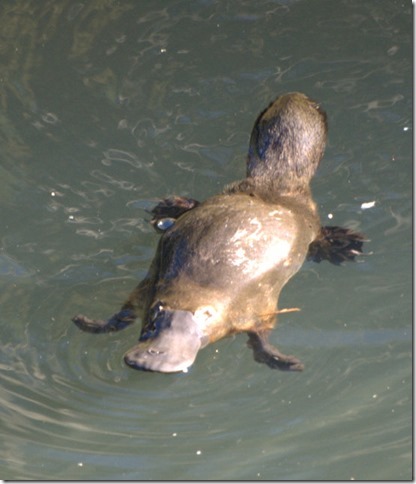 These photos are not great because platypus are more or less nocturnal so
these pictures had to be taken at dusk, but hopefully they’re enough to get the
idea. Here is a different animal – you can see the claws on his hind feet but
not the spurs:
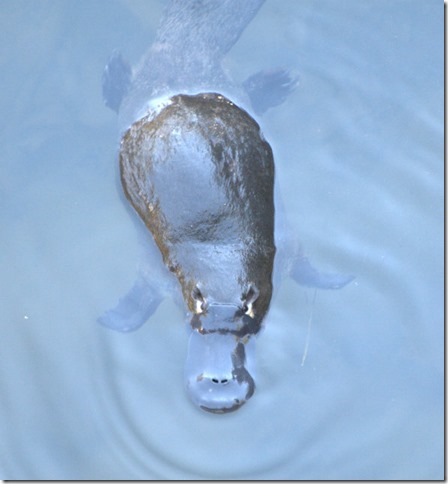 In the shot above you can get an idea of his fur, which is very like
moleskin. And here is a typical action shot:
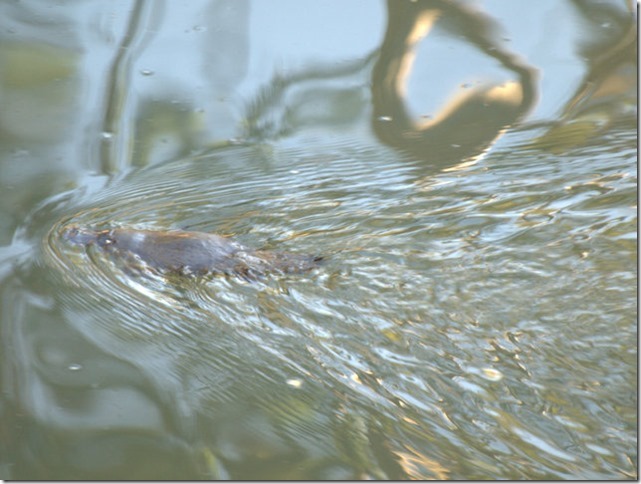 Platypus need to eat 20% of their body weight per day which equates to 12
hours hunting, every day. So they’re very active, scooting about constantly.
They stay on the surface for about 5-15 seconds, then dive for 30-40. A delight
to watch.
Teamed up with the platypus is the beautiful Azure Kingfisher Ceyx
azurea:
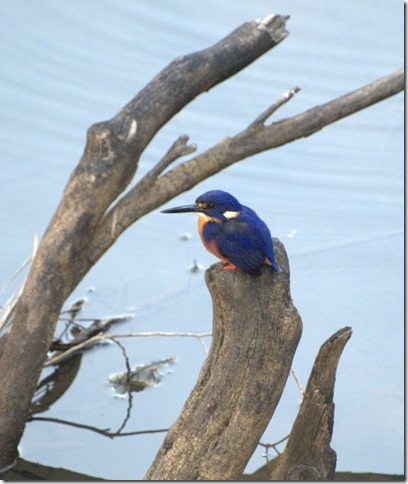 These birds follow the platypus about, waiting for it to disturb a fish
upon which they can then swoop. Also sharing the pool are turtles. This one is
possibly Elseya latisternum, the Saw Shelled Turtle:
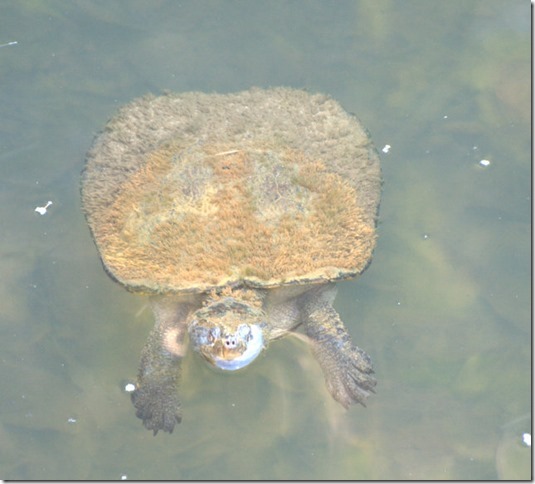 |